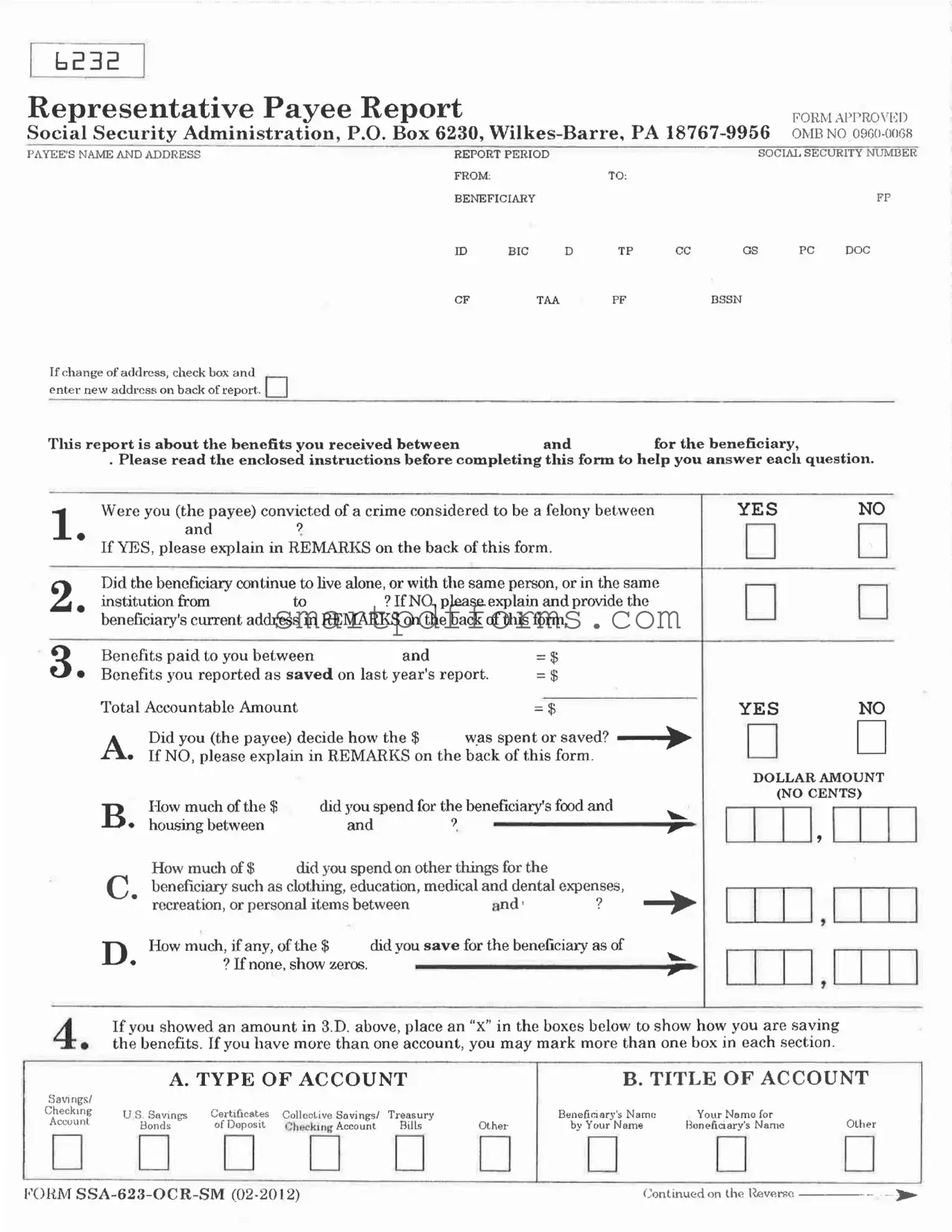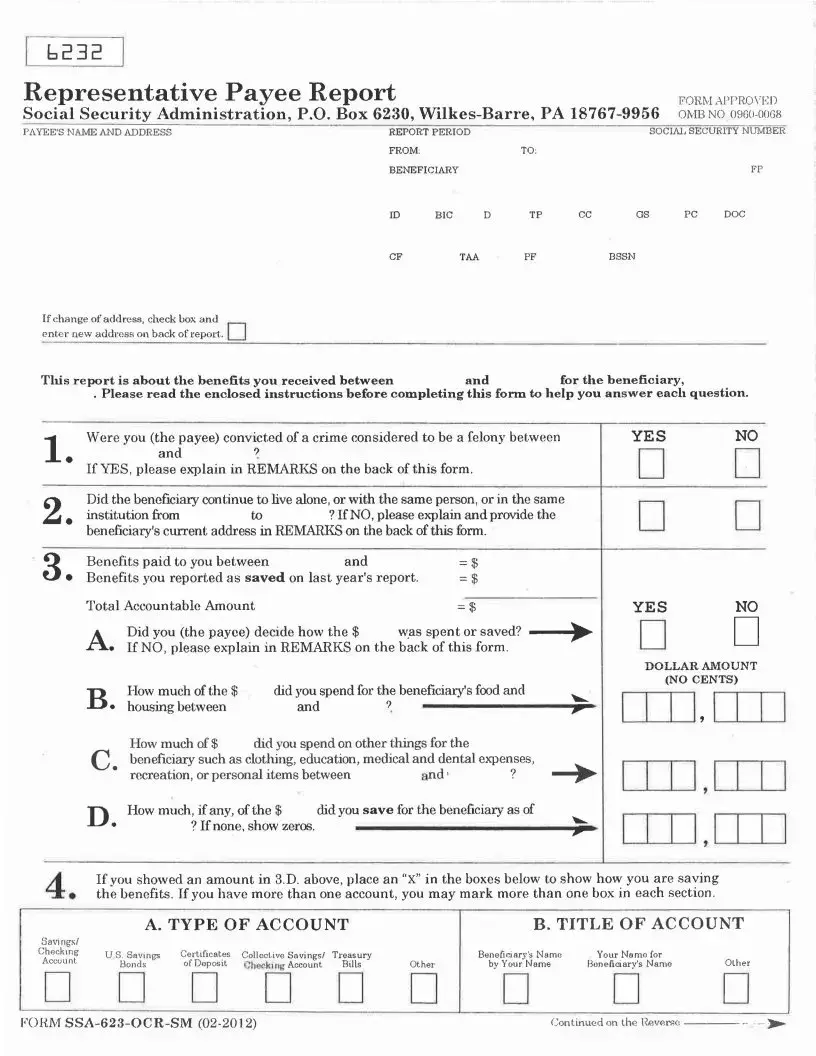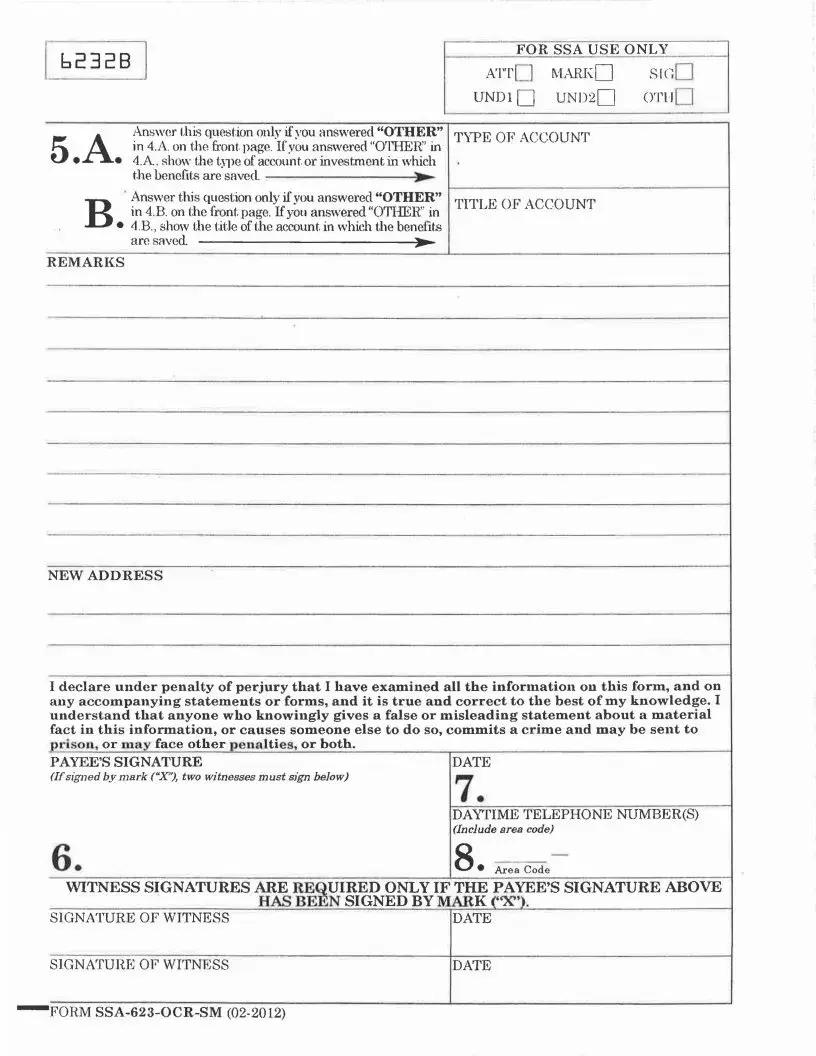Blank Ssa 6232 PDF Template
The SSA-6232 form, formally known as the Representative Payee Report, is a critical document for individuals appointed by the Social Security Administration (SSA) to manage the benefits of others. This form requires detailed information on how the beneficiary's Social Security benefits were used during a specific period. Careful completion of this form ensures compliance with SSA requirements and secures the continued trust in managing beneficiaries' funds. Ready to report responsibly? Click the button below to start filling out your form.
Make This Document Now


